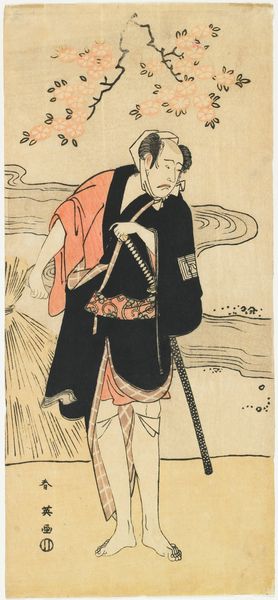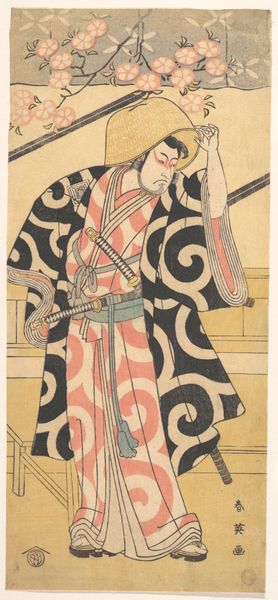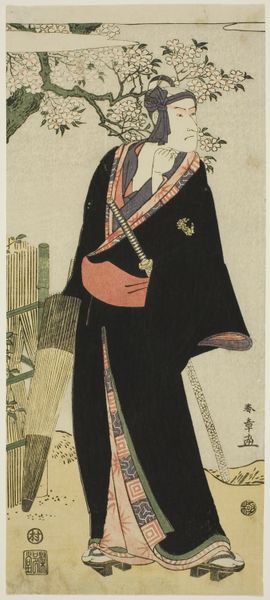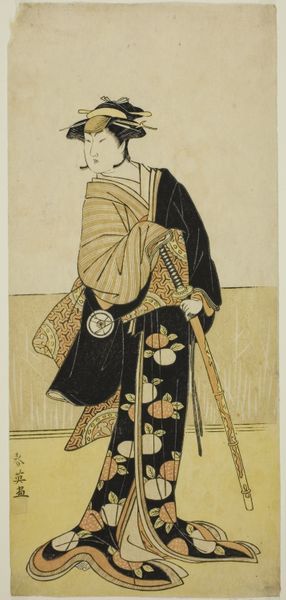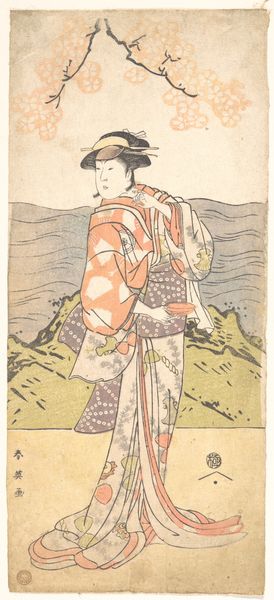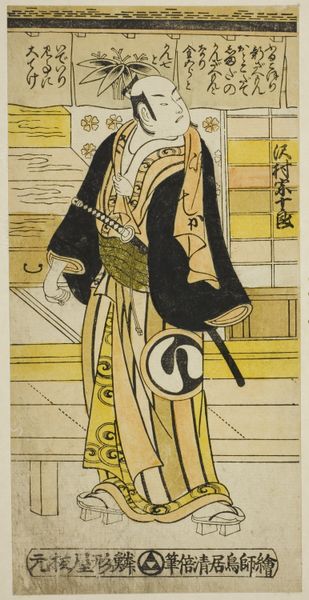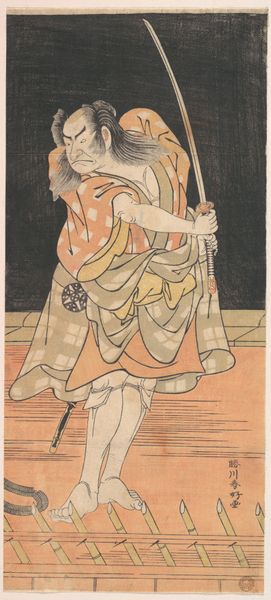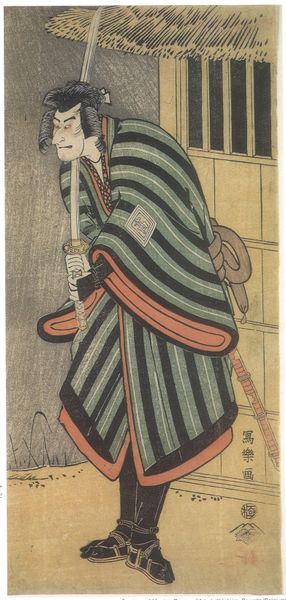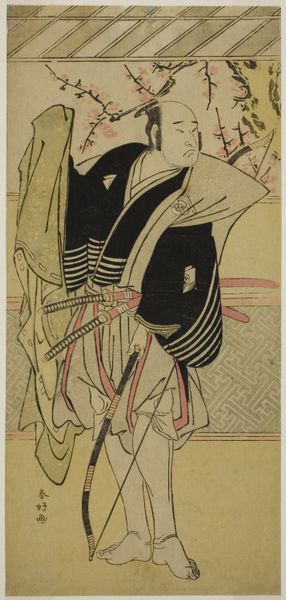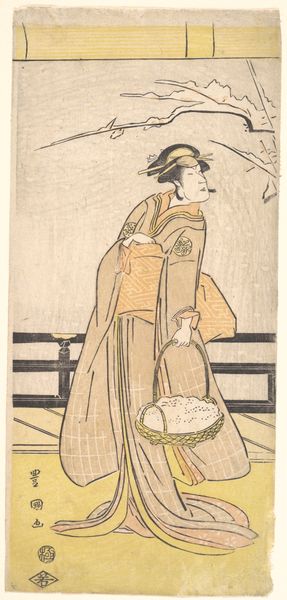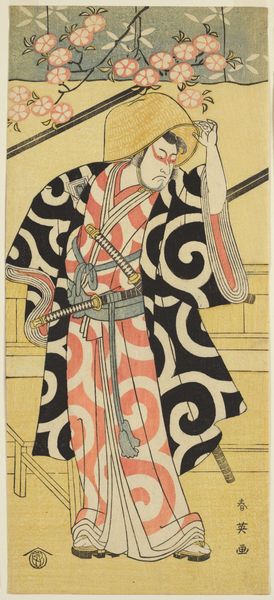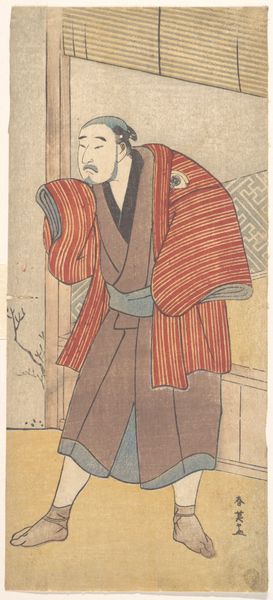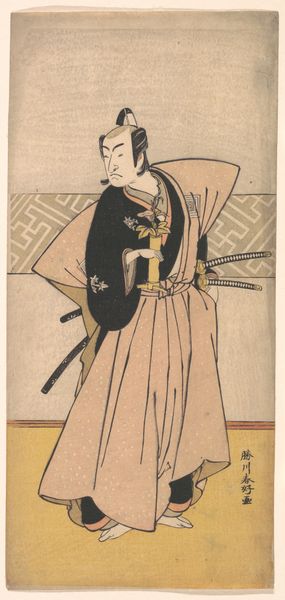
The Second Ichikawa Komazo as a Boatman Standing on the Deck of a Barge 1783 - 1803
0:00
0:00
print, woodcut
#
portrait
#
narrative-art
# print
#
asian-art
#
ukiyo-e
#
woodcut
Dimensions: 12 3/4 x 5 5/8 in. (32.4 x 14.3 cm)
Copyright: Public Domain
Curator: What a striking figure! Before us, we have "The Second Ichikawa Komazo as a Boatman Standing on the Deck of a Barge." This color woodblock print, by Katsukawa Shun'ei, was likely created sometime between 1783 and 1803. Editor: He does cut quite the figure! The woodcut's almost unsettling, though – something about the flatness and the sharp contrasts. Is he a noble playing dress up or an actual laborer, do you think? Curator: A pertinent question! Komazo was a celebrated Kabuki actor, so we are certainly viewing a performative persona. Ukiyo-e prints like this one served as both promotion and documentation, shaping public perception and solidifying the actor’s brand. How might the social standing of actors inform our view? Editor: Interesting! Because actors, although incredibly popular, existed on the margins of society, didn't they? And look at his garb. The elaborate, almost gaudy stripes juxtapose with his bare feet. The costuming performs this careful dance between privilege and a kind of forced societal separation, I think. Is it celebratory or subtly critical, or both? Curator: Exactly. The figure's placement on the barge, itself a method of transit and a signifier of commerce and movement, lends another layer. It reminds us that kabuki performances and art circulation depended upon those social strata. Note, too, the ambiguous setting—is that reedy riverbank supposed to appear appealing, or foreboding? Editor: A kind of psychological landscape there, perhaps, reflecting his own precarious standing. And, dare I say, that grimace he seems to be sporting… I think your reading is definitely influencing how I see the expression of both pride and resignation present here. Curator: Shun'ei, as an artist, was part of a visual culture that simultaneously entertained and commented on the socio-political landscape. His portrait offers both immediacy and prompts deep critical thinking about identity and marginality in Japanese society. Editor: Precisely, and for me, grappling with that tension between the surface image and the deeper contextual layers reveals the lasting power this work has. It is not just a representation but an active agent.
Comments
No comments
Be the first to comment and join the conversation on the ultimate creative platform.
